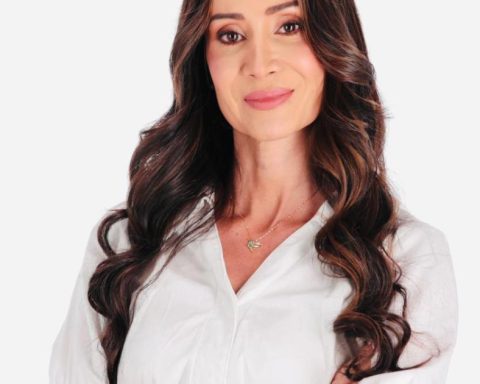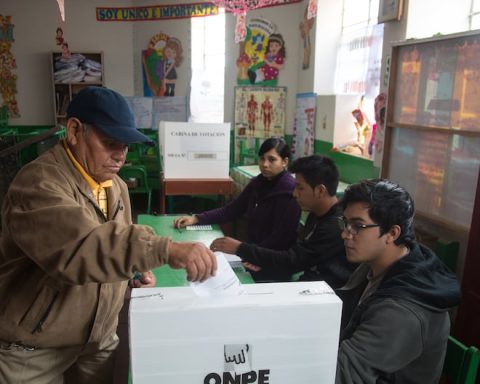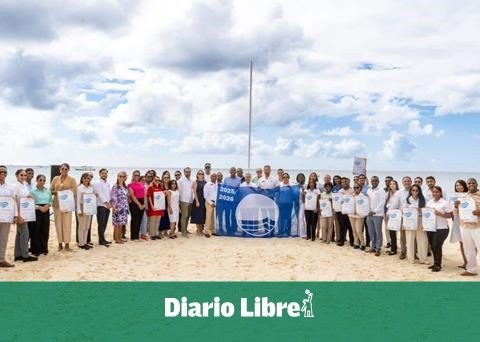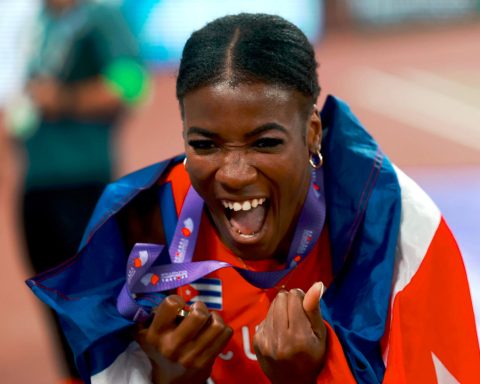These legends reflect the rich cultural heritage and beliefs that form part of the identity of these departments.
News Colombia.
Colombia is a country with vast cultural wealth and a past full of mysteries, myths and legends that have been passed down from generation to generation.
Throughout the departments, there are stories hidden that, although very popular locally, are little known in other regions of the country. Here we present some of the most curious and interesting legends that have endured in the memory of Colombians and that deserve to be told.
Amazonas: The Legend of the Yuruparí
In the heart of the Amazon rainforest, the Ticuna Indians tell the story of the Yuruparí, a spiritual being that manifests itself through enigmatic sounds and has the power to punish those who do not respect ancestral norms. It is said that this spirit protects the forest and its creatures, and that only shamans can invoke its presence to perform healing rituals.
Antioquia: The Big Hat
In the towns of Antioquia, the figure of the Sombrerón is widely known. He is a small and mysterious man who dresses in black and wears a huge hat. The Sombrerón appears at night to punish unfaithful men and flirtatious women, tangling the hair of the ladies and leaving the men lost on unknown paths.
Arauca: The Whistler
El Silbón is one of the most terrifying legends of the eastern plains, including Arauca. This spectre is a man condemned for killing his father, and is recognised by his high-pitched and persistent whistle, which can be heard in the distance but is closer than it seems. It is said that he carries a sack with his father’s bones, and those who hear it are destined to die.
Atlantic: The Water Cloud of Barranquilla
In Barranquilla, there is talk of the “Water Cloud,” a meteorological phenomenon associated with a soul in torment. According to legend, this cloud pursues people who have committed serious sins and drenches them with torrential rain, without anyone else being affected by the storm.
Bolivar: The Mohán of the Canal del Dique
The Mohán is an ancestral spirit that lives in the waters of the Canal del Dique. The fishermen of Bolivar claim to have seen this giant, hairy man, known for turning canoes over and dragging men to the bottom of the water. He is considered a protector of nature and an enemy of those who try to exploit it without permission.
Boyacá: The Legend of Donato’s Well
On the outskirts of Tunja, there is a well known as Donato’s Well. According to legend, an ambitious man named Donato sold his soul to the devil in exchange for riches. When he wanted to repent, he was condemned to live eternally in the well, guarding a cursed treasure that he will never be able to use.
Caldas: The Patasola
In the mountains of Caldas, peasants speak of La Patasola, a one-legged woman who wanders through the jungle, screaming and terrorizing those who venture into the forest. La Patasola was an unfaithful woman, murdered by her husband, who now seeks revenge against men.
Caquetá: The Dwarf of La Perdiz Creek
In the region of Florencia, there is talk of a dwarf who lives in the Quebrada La Perdiz. This being appears to unsuspecting travelers, offering them riches if they follow him. However, those who accept the offer never return, as the dwarf leads them to their doom in the jungle.
Casanare: The Fireball
In Casanare, especially in the plains, there is a story told of a ball of fire that appears at night, especially on lonely roads. It is believed to be the spirit of a greedy man who hid his money and, upon dying, was condemned to wander eternally, guarding his treasure.
Cauca: The Legend of Juan Machete
In Cauca, we know the story of Juan Machete, a man who made a pact with the devil to obtain riches. However, when he tried to break the pact, he was transformed into a shadow that wanders through the fields, frightening the peasants and protecting a hidden treasure.
Cesar: The Mermaid of the Guatapurí River
The Guatapurí River in Valledupar is famous for the legend of the mermaid that lives in its waters. It is said that this mermaid appears on nights of the full moon to seduce young men and drag them to the bottom of the river, where they remain trapped forever.
Chocó: The Anima Sola of the Atrato
On the banks of the Atrato River, there is talk of Anima Sola, the spirit of a woman who drowned and who wanders through the jungle seeking solace. Chocó fishermen claim to have seen her figure floating on the water, emitting heartbreaking laments.
Cordoba: The Mother Water of Sinú
In Córdoba, the Mother Water is a mythical figure who protects the waters of the Sinú River. This being takes the form of a beautiful woman who attracts men with her song and then drags them into the depths. It is said that those who see her are cursed and never return to being the same.
Cundinamarca: The Legend of the House of the Seven Balconies
In the city of Bogotá, there is the House of the Seven Balconies, a colonial building that has been the scene of mysteries and tragedies. Legend has it that a young woman was murdered on one of its balconies by a jealous suitor, and since then her spirit has wandered around the house, making the balconies ring with laments during the night.
Guainía: The Golden One
In Guainía, the legend of El Dorado is one of the most emblematic. It is said that immense riches belonging to a lost civilization are hidden in the Guatavita lagoon. The indigenous people say that the chief of the tribe bathed in gold and threw offerings of this precious metal into the lagoon, which has inspired numerous expeditions in search of this treasure.
Guaviare: The Stone of the Gods
In Guaviare, near the Chiribiquete National Natural Park, there is a large stone known as the Stone of the Gods. The local indigenous people believe that it is a sacred place where the gods left traces of their existence. It is said that those who visit the stone and do not respect ancestral traditions are punished with visions and hallucinations.
Huila: The Weeping Woman of Magdalena
In Huila, the legend of La Llorona is widely known, but with a particular variation. Here, La Llorona is said to appear on the banks of the Magdalena River, looking for her lost children. However, unlike other versions, this Llorona is more benevolent and only takes away men who have been cruel to their families.
La Guajira: The Ghost of Cape Vela
In La Guajira, the Wayúu tell the story of the Ghost of Cabo de la Vela, a spirit that protects fishermen and appears as a figure of light on the horizon. This ghost is said to guide lost sailors safely to shore and protect the treasures in the depths of the sea.
Magdalena: The Mulatto Mary of Cienaga
In the municipality of Ciénaga, Magdalena, there is a legend about the María Mulata, a black bird that brings good fortune to those who manage to see it. However, the legend also warns that if someone tries to hunt the María Mulata, they will fall into disgrace and their family will be cursed for generations.
Meta: The Legend of the Alligator Man
In the plains of Meta, there is the legend of the Alligator Man, a being that lives in the depths of the rivers and transforms into an alligator at night. It is said that this being is the spirit of a man punished for his ambition and desire for power, and that now protects the rivers from those who seek to harm them.
Nariño: The Weeping Woman of the Green Lagoons
In the town of Las Lajas, it is said that a woman cries eternally in the Lagunas Verdes, searching for her son who disappeared in its waters.
North of Santander: The Mohán of the Indian Cave
In the cave located in the municipality of Ocaña, it is said that a monstrous being called El Mohán lives, protector of the indigenous treasures hidden there.
Putumayo: The Legend of the Alligator Man of the Putumayo River
It is said that a man turned into an alligator to spy on women while they were bathing in the river, but he got trapped in that form, frightening the local inhabitants.
Quindío: The Legend of the Herd of Kings
In the municipality of Calarcá, there is the story of a cursed hacienda where those who try to keep its wealth end up losing everything in a mysterious way.
Risaralda: The Patasola of the Tatamá Mountains
In the jungles of Risaralda, there is talk of a spectral woman with only one leg who terrorizes unfaithful men and mistreats those who enter her domain.
San Andrés and Providencia: The Mermaid of La Aguada
The fishermen of San Andrés say that in La Aguada there lives a mermaid who attracts men to the bottom of the sea, promising them riches and eternal love.
Santander: The Alligator Man of the Magdalena River
Similar to that of Putumayo, on the banks of the Magdalena River, in the municipality of Barrancabermeja, there is a story about a man who transformed himself into an alligator to spy on women and was trapped in that form, frightening the locals.
Sucre: The Big Hat of Sincelejo
On nights of the full moon, a man dressed in black with a large hat appears and wanders the streets of Sincelejo, tormenting those who have committed some wrong.
Tolima: The Witch of Lebanon
In the municipality of Líbano, there is the story of a witch who transforms into different animals to scare the inhabitants of the place.
Cauca Valley: The Madremonte of the Cerro de Cristo Rey
In the Cauca Valley, it is said that Madremontea protective figure of nature, appears on stormy nights on Cerro de Cristo Rey to protect the environment from intruders.
Vaupés: The Curupira of the Vaupés Forests
It is said that in the Vaupés jungle lives the Curupira, a being with backwards feet that protects the flora and fauna, confusing and misleading the hunters who try to harm nature.
Vichada: The Swamp Man
It is said that in the swamps of Vichada a man covered in mud appears who attracts solitary travelers into his death trap, making them disappear forever.
Read also:


















